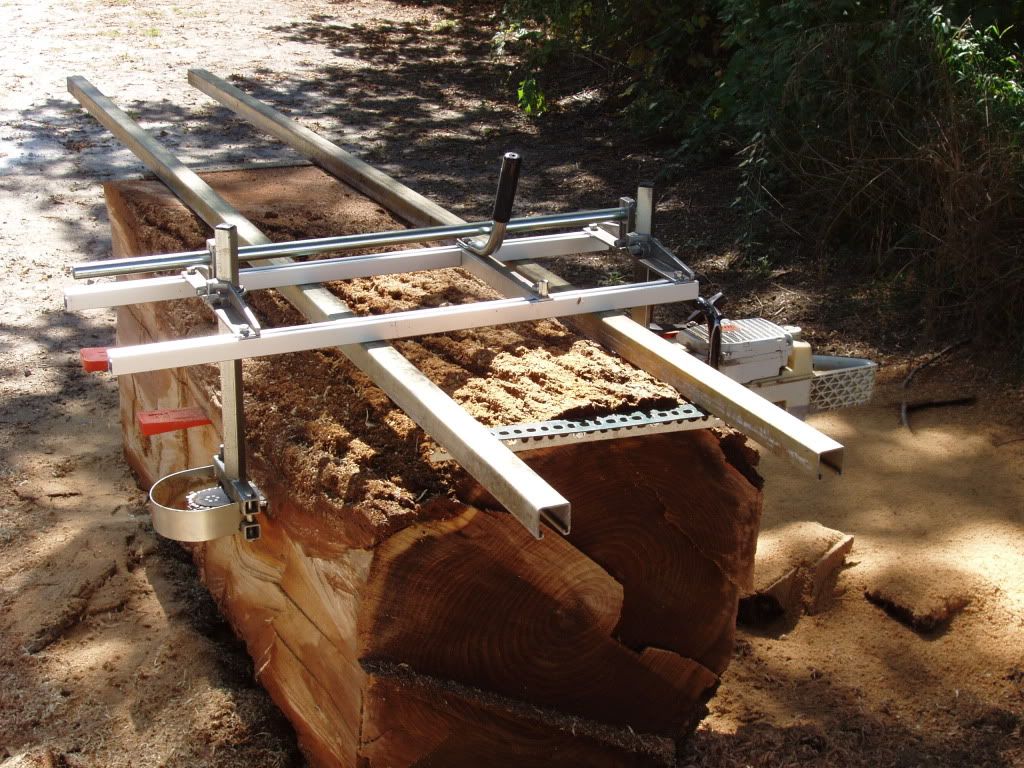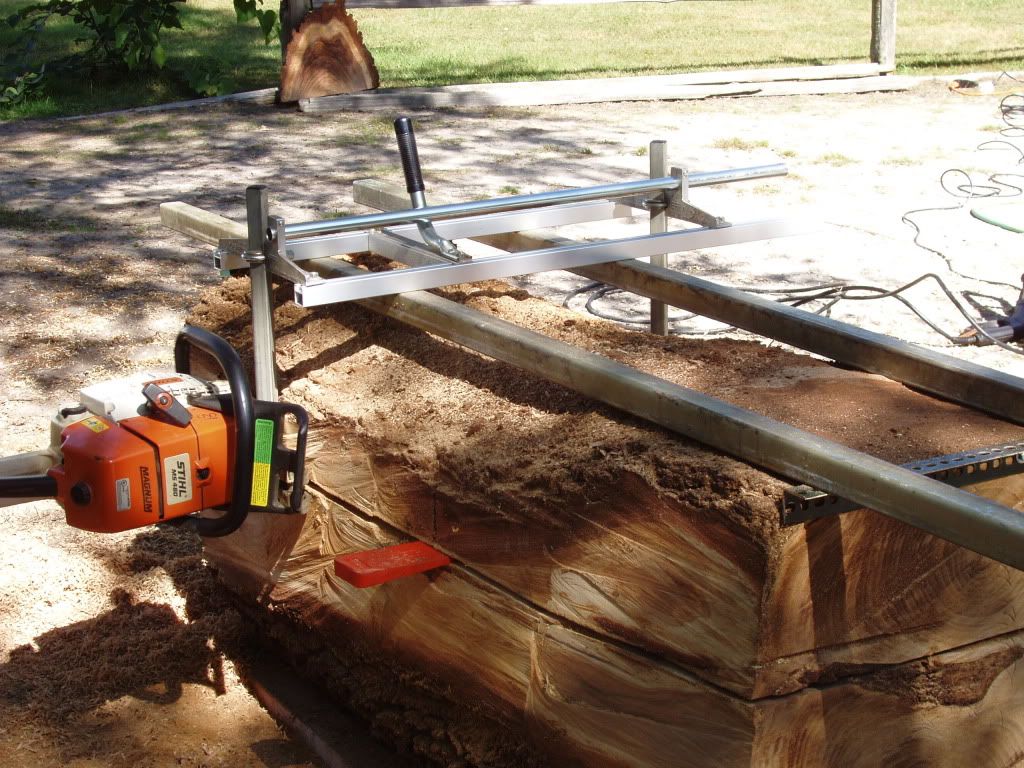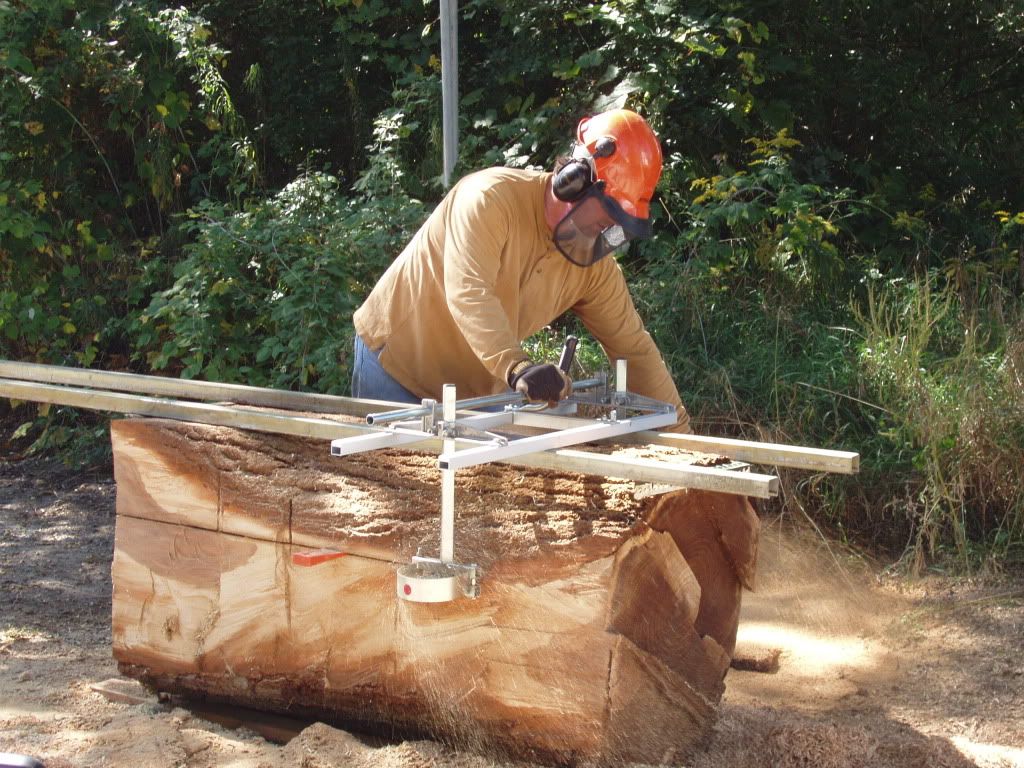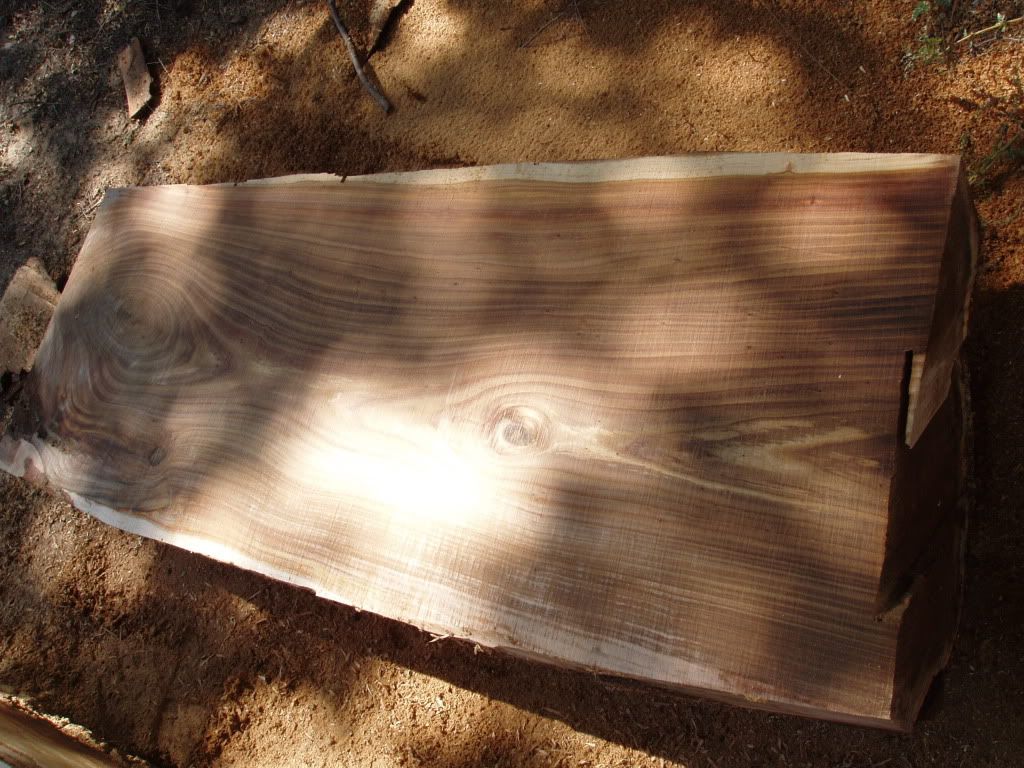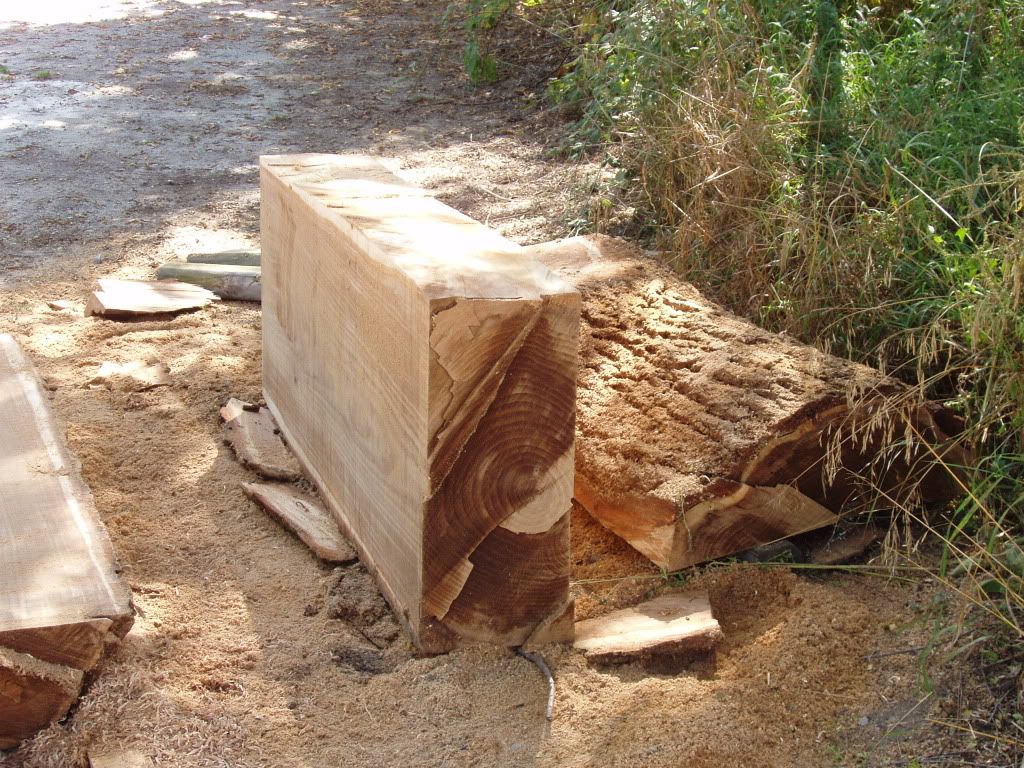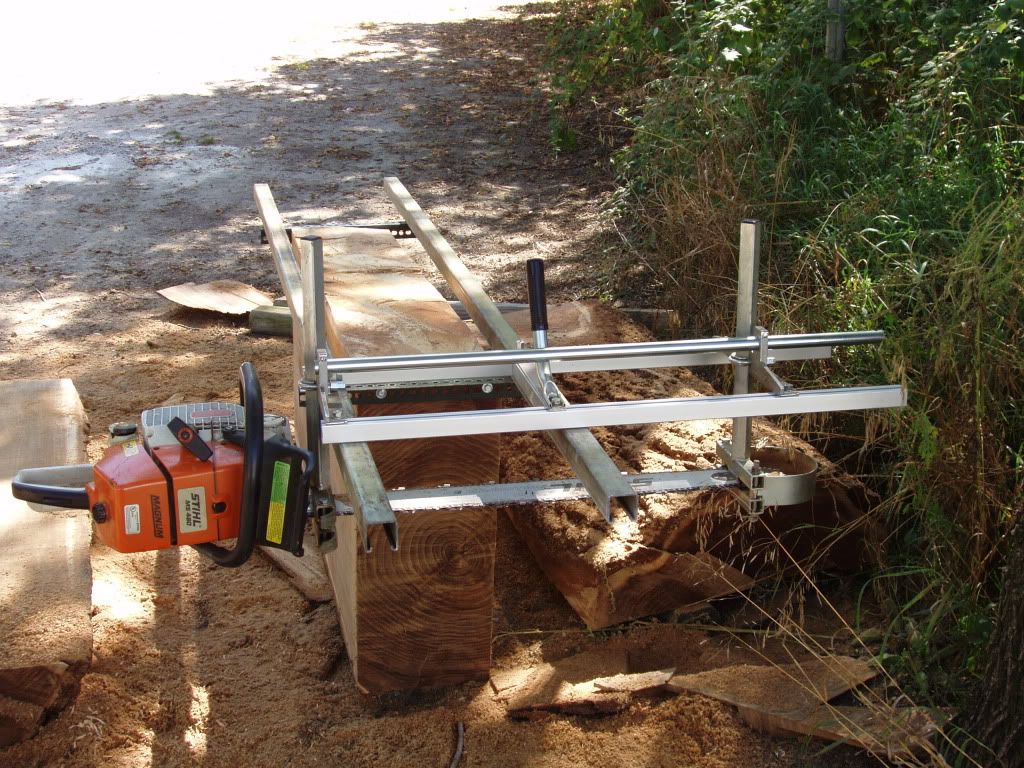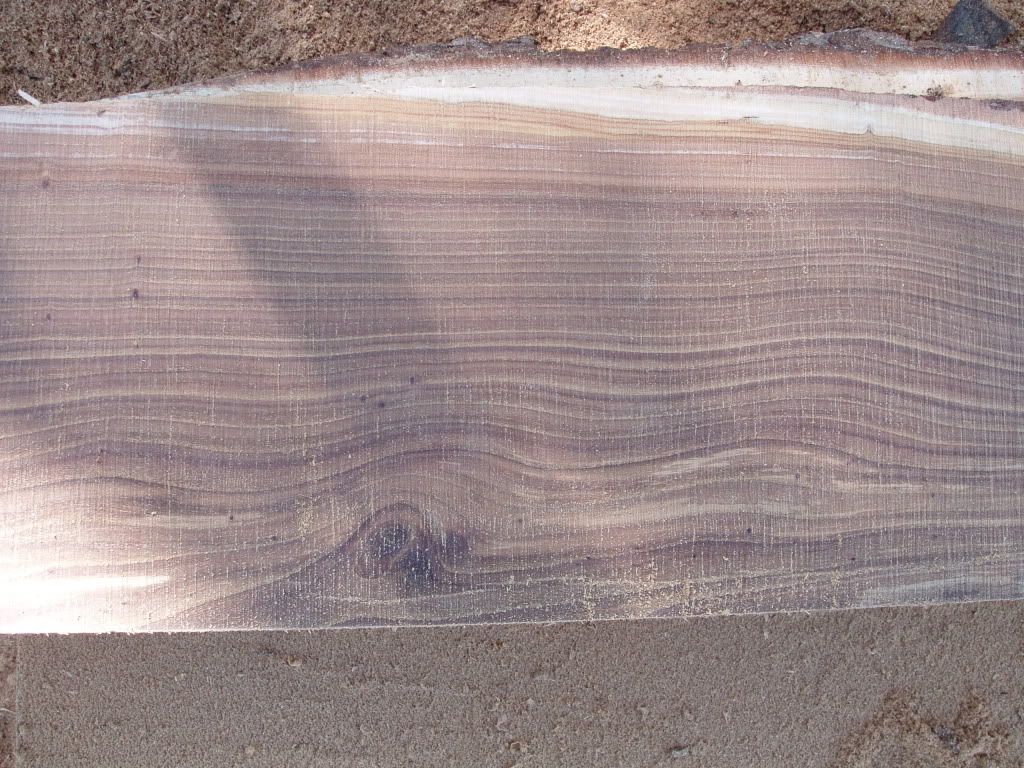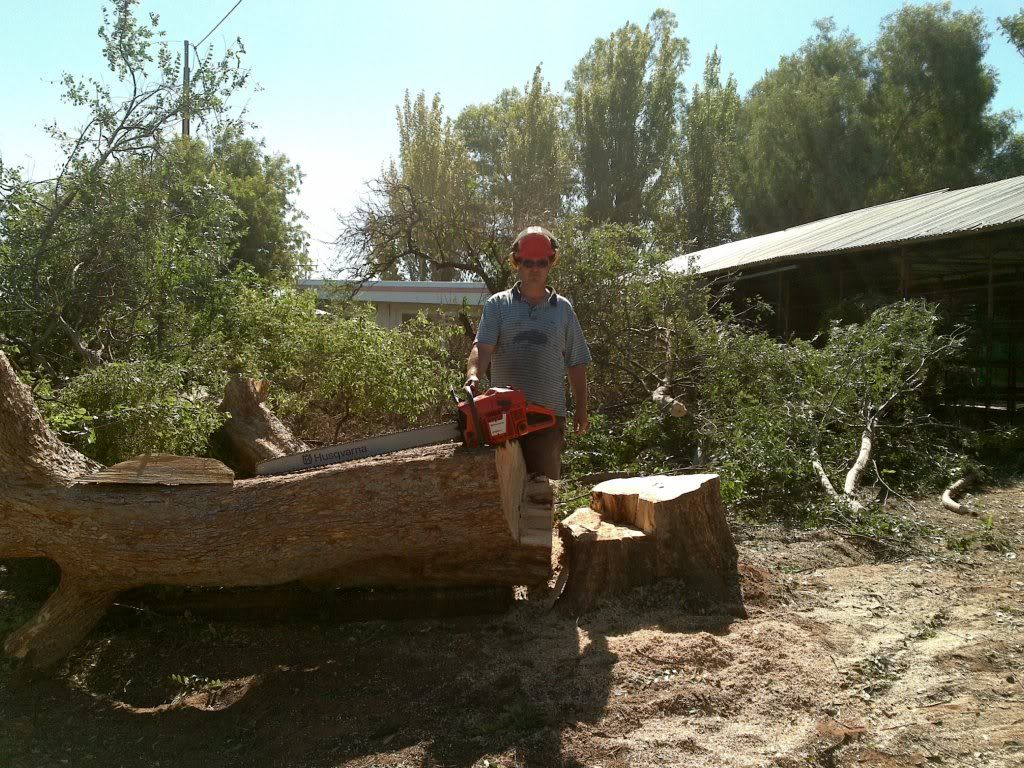Great job on the elm. I use it for stickers, and have cut out siding for sheds. As well as a lot of 2x4's and bigger boards/beams.
One very tough wood. Also for oxen yokes, and farm implement handles. Bread boards and the old buck board wagons.
Elm
The hard-as-nails hardwood with beauty a burl deep
Throughout history, man has chosen elm when he needed a tough and durable wood. Wheelwrights fashioned wheel hubs from nothing but the rugged elm, and then used it to floor long-lasting wagon beds. The Chinese called elm y�mu, and worked it into utilitarian furniture that would take abuse. Fine furnituremakers called on elm, too, but in the form of burl veneer from a species growing in Europe's Carpathian Mountains.
In early America, Iroquois Indians tempered fever with a medicine derived from the inner bark of the slippery elm. Years later, players in the new game of baseball chewed this same elm bark to produce a sticky saliva, which when rubbed into the pocket of their glove, made balls easier to catch.
Despite its many uses, elm's primary fame has come from its graceful beauty and the shade it provides. From France to Middle America, elm once lined miles of city streets and country byways. Today, unfortunately, elm trees are being killed by a spreading fungus called Dutch elm disease. Efforts to control the disease haven't been successful. Fortunately, the propagation of hybrid, disease-resistant trees shows promise.
Wood identification
Elm claims about 20 species in the temperate regions of the world. The most well known include the stately American elm (Ulmus Americana) and the slippery elm (Ulmus rubra) of the United States, and the English elm (Ulmus procera) in Europe and Great Britain.
In the forest, elm often grows 140' tall. But open-grown elms rarely reach that height. Instead, they form a spreading, umbrella-like crown valued for shade.
The English and American elms have deeply fissured bark with crisscrossing ridges of an ash-gray color. The bark of slippery elm is the same color, but lacks pattern.
You can identify elm easily by its leaves. About 5" long and 3" wide, they have saw-toothed edges ending in a sharp point.
Elm heartwood ranges in tone from reddish brown to light tan, while the sapwood approaches off-white. The usually dramatic grain resembles ash. Moderately dense, elm weighs nearly 40 lbs. per cubic foot dry.
American and slippery elm will root practically everywhere east of the Rocky Mountains (except for the high Appalachians and the southern tip of Florida). You'll find elm growing in river bottoms and on low, fertile hills mixed with other species of hardwoods.
Working properties
Hard and tough, elm still bends easily when steamed, and when dry, holds its shape. Its twisted, interlocking grain makes elm difficult to work with anything but power tools. It also won't split when screwed or nailed, but demands drilling pilot holes. And the wood sands easily to a natural low luster.
Burl veneers tend to be brittle and troublesome to flatten. Try those with flexible backing.
Uses in woodworking
Besides the frequent use of its veneer for paneling, furnituremakers take advantage of elm's ruggedness for hidden furniture parts. You'll often find it in chair and sofa frames, backs, and legs. Yet elm's beautiful wood grain also has fine furniture possibilities.
Elm works well, too, for butcher block tops and cutting boards because it has no odor or taste, and it won't split. When in contact with water, elm resists decay, so many boatbuilders use it for planking.
Cost and availabilitly
Today, most elm lumber goes for manufacturing use and very little finds its way to retail outlets. Where you do find it--usually at small, local sawmills--it costs less than $2 a board foot compared to nearly twice that for oak and walnut. Native elm veneer sells for about $1 per square foot--Carpathian elm burl about double that.
